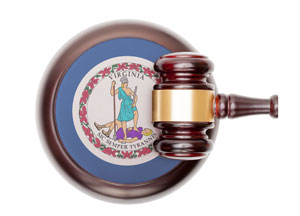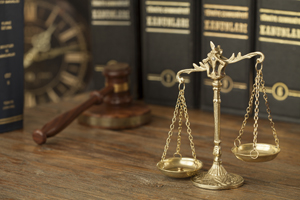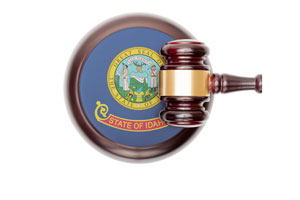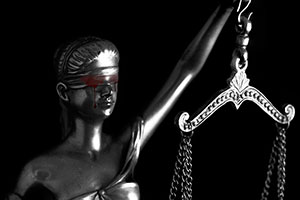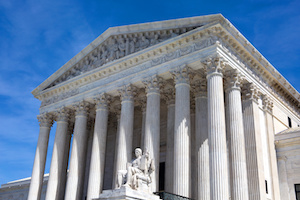The American jury trial system is adversarial. The plaintiff presents evidence to prove entitlement to legal relief. The defense challenges that evidence and has the option to present evidence of its own to persuade the jury that relief should not be awarded.
Between the two adversaries sits a neutral judge. The role of the judge, as Chief Justice Roberts put it in his confirmation hearing, is to call balls and strikes. In fact, Supreme Court Justices do not play the role of umpire — they determine the law — but Chief Justice Roberts aptly described the role of a trial judge.
Assuming that the law is settled, the trial judge’s only task is to assure that the parties receive a fair trial. The judge should not take sides in the dispute. Taking sides is the job of the adversaries and their attorneys.
Judges must usually allow the parties to present their evidence as they see fit, within the bounds of the law. Judges decide whether questions that the lawyers ask witnesses are proper, but judges do not themselves question witnesses. Deciding whether questions are proper results in the “balls and strikes” rulings that Chief Justice Roberts described.
On occasion, judges ask questions to clarify answers, but they must maintain their neutrality while doing so. Judges cross the line between neutrality and advocacy when they take over the questioning of a witness. The Idaho Supreme Court recently decided whether a trial judge’s questioning of an expert witness crossed that line.
Facts of the Case
Damian Secol died from T-cell lymphoblastic lymphoma, a rare form of cancer. Several months before his death, Damian visited a primary care physician, Dr. Austin Gillette, at Fall River Family Medicine. Damian complained of persistent coughing and a feeling that his throat was closing when he lay down.
Damian visited the same clinic five more times over a period of about six weeks. Each time he was examined by either Dr. Gillette or Dr. Kelly Dustin. Neither physician ordered a chest x-ray.
Damian’s wife Cassie accompanied Damian on one of his visits. She asked Dr. Dustin to perform a chest x-ray. Dr. Dustin told her the x-ray was unnecessary because Damien was suffering from an allergy or asthma.
Damian’s symptoms steadily worsened. After his last visit with the clinic, he drove some distance to another clinic and asked for a second opinion. He was promptly given a chest x-ray and a CT scan, which revealed a large mass in his chest. A biopsy confirmed that Damien had acquired a fast-growing form of cancer. The first stage of Damian’s treatment by an oncologist was successful, but his condition deteriorated during the second stage, leading to his death.
Trial Evidence
On behalf of herself and her four children, Cassie sued Fall River Family Medicine and Drs. Gillette and Dustin for medical negligence. She contended that the doctors breached the appropriate standard of care by not ordering a chest x-ray, resulting in a delayed cancer diagnosis and Damian’s premature death.
The clinic designated two expert witnesses to testify about standard of care. Cassie asked the court to limit the clinic to a single standard of care expert. The judge granted that motion. After the judge was appointed to a higher court, the case was reassigned to Judge Jon Shindurling. The clinic asked Judge Shindurling to reconsider the ruling that limited it to a single standard of care expert. While a change of judge is not usually an adequate ground to reconsider a ruling, Judge Shindurling granted the clinic’s request.
The clinic also disclosed Dr. Jeffrey Hancock, Damian’s treating oncologist, as a non-retained expert witness. The clinic wanted to ask Dr. Hancock whether his prognosis would have been different if Damian had been diagnosed six weeks earlier. The clinic contended that the delayed diagnosis, even if caused by their doctors’ negligence, did not cause any harm because Damian would have died on the same day even if the cancer had been diagnosed six weeks earlier.
Carrie objected that Dr. Hancock should be limited to testifying about his diagnosis and treatment of Damian. Since he was not a retained expert, Carrie argued that he should testify as a treating physician and should not provide expert opinions about the impact of a delayed diagnosis. Judge Shindurling overruled those objections.
Judicial Questioning
After Dr. Hancock testified and was cross-examined, Judge Shindurling engaged in an extensive cross-examination of his own. Among other questions, the judge asked:
- Whether it was likely that Dr. Gillette should have diagnosed cancer during his first visit with Damian.
- What the primary care physician faces after seeing symptoms which “ultimately, in hindsight,” were symptoms of cancer.
- At what point a patient who is being treated for symptoms similar to Damian’s would come to see an oncologist. Dr. Hancock testified that he would usually see the patient after a couple of months of treatment, when a physician has seen a mass in a chest x-ray.
- Whether sending a patient to an oncologist “a couple of months” after first seeing the patient for such symptoms means that the treating physician acted inappropriately. Dr. Hancock responded, “never.”
The judge said that he wanted to hear about the six-week period between the first consultation and the chest x-ray because “the testimony hasn’t focused on that.” While the court characterized the questions as “clarifying,” the questions went beyond the evidence presented by the defense and actively solicited expert opinions that the defense did not solicit.
Clarissa moved for a mistrial because the judge departed from his role as a neutral umpire and became an advocate for the defense. Unsurprisingly, the judge denied that motion and the jury returned a verdict in favor of the clinic and its doctors. Clarissa appealed.
Appellate Analysis
While Idaho’s procedural rules allow judges to question witnesses, the state supreme court noted that “exercise of this authority is fraught with the risk that the jury will be influenced in their deliberations by their perception of the court’s opinion of an issue.” A judge’s extensive questioning of a witness signals the judge’s belief that the witness has given important testimony.
A jury may attach greater weight to the testimony of a witness who has been questioned by the judge or may attach lesser weight if the judge’s questions suggest skepticism about that testimony. Judicial questioning should therefore be limited to clarifying a confusing answer.
Judge Shindurling went well beyond the permissible bounds of questioning. As the supreme court noted, the judge elicited inadmissible testimony. As he acknowledged in his deposition, Dr. Hancock was not qualified to testify about the standard of care that applies to primary care physicians. The clinic did not ask him to do so. Yet the judge asked what Dr. Gillette should have done and expressly asked whether Dr. Gillette acted inappropriately. The questions could only be answered with inadmissible standard of care testimony.
The judge’s comment explaining why he wanted to ask questions was also prejudicial. The judge said he had “some thoughts that haven’t been answered” and that it had only “been suggested, or at least implied” that Fall River should have diagnosed Damian’s disease earlier.
The first comment suggests that the judge wasn’t satisfied with the evidence presented by Clarissa. As the supreme court explained, the judge’s “statement that the evidence that had been presented merely implied or suggested certain facts called into question the weight of the expert testimony offered by the Secols during trial.”
The jury likely understood the judge’s comments to mean that the judge didn’t think the expert evidence presented by Clarissa was sufficient to prove malpractice. The judge thus improperly placed his thumb on the scale to favor the clinic.
Finally, after Dr. Hancock testified that it is never inappropriate for a treating physician to fail to order a chest x-ray for a period of several weeks as a patient’s health declines, the judge commented: “Thank you. That’s the questions I had. I think that we needed to focus on that point of view.” The jury could easily have perceived that comment as an endorsement of Dr. Hancock’s expert opinions.
Since Judge Shindurling’s comments and questions unmistakably signaled his opinion that the malpractice claim had no merit, the judge deprived Clarissa of a fair trial. The supreme court therefore reversed the judgment against her and ordered a new trial.
Unfortunately, not all trial judges confine themselves to calling balls and strikes. When a judge abandons neutrality and takes one party’s side, presenting expert testimony becomes a futile endeavor. Fortunately, the Idaho Supreme Court ordered the case reassigned to a different judge so that Clarissa will have a chance to present her case to a jury that will not be influenced by judicial bias.





